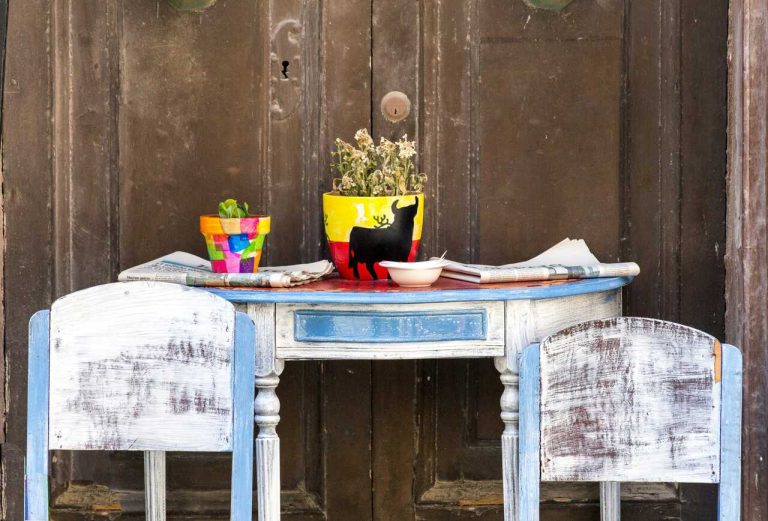
How to Address Your Friends in Spanish
DATE:
Bienvenidos amigos y amigas! Are you learning Spanish and wondering about the different ways to express the concept of “friend” in this beautiful language?
Look no further! In this blog, we will explore the various ways in which Spanish speakers refer to their amigos and amigas, and the nuances of meaning that each term carries.
Spanish is a rich and diverse language, spoken by over 500 million people worldwide. It has a long and fascinating history, and its vocabulary reflects the diverse cultural influences that have shaped it over the centuries.
When it comes to words for “friend,” Spanish is no exception. Depending on the context, the relationship, and the region, there are several words and expressions that can be used to convey the idea of friendship.
For instance, the most common term for “friend” in Spanish is “amigo” (masculine) or “amiga” (feminine). This is the most general and widely used word for referring to someone you have a close and affectionate relationship with.
However, there are also other words and expressions that can be used to describe different types of friendships or levels of familiarity.
The different ways to say “friend” in Spanish reflect the nuances and complexities of human relationships. By learning and using these different terms, you can deepen your understanding of Spanish culture and improve your ability to communicate with native speakers.
So, next time you make a new amigo or amiga, consider which term best reflects the nature of your relationship, and use it with confidence!
How To Say “Friend” In Spanish
First let’s look at the most universal ways to say “friend” in Spanish, as there are actually hundreds of ways depending on the country.
Amigo/amiga
The most common and widely used term for “friend” in Spanish. It can be used to refer to someone with whom you have a close and affectionate relationship.
Compañero/compañera
This term is often used to refer to someone with whom you have a close working or professional relationship, such as a colleague or classmate. It conveys a sense of camaraderie and mutual respect.
Colega
Similar to “compañero/compañera,” “colega” is often used to refer to a friend or acquaintance with whom you have a casual or professional relationship. It may not carry the same level of emotional intimacy as “amigo/amiga.”
Conocido/conocida
This term is often used to refer to someone you know, but may not necessarily have a close relationship with. It can be translated as “acquaintance” in English.

How To Say Friend In Spanish Slang
Now, there are many different ways to say “friend” in Spanish depending on the country you are in. Let’s see below the different ways to say “friend” in Spanish, separated by country.
Venezuela
Pana
This is one of the most popular slang used by Venezuelans to refer to a friend. It is an abbreviation of “pana de alma” which roughly translates to “soul buddy.” It conveys a sense of warmth, closeness, and trust. It is widely used across the country among people of all ages.
Chamo/chama
This is another popular Venezuelan slang used to refer to a friend, particularly among younger generations. It can be translated as “kid” or “youngster” and conveys a sense of youthfulness and camaraderie.
Broder
This is a variation of “brother” and is often used among close male friends in Venezuela. It conveys a sense of brotherhood, loyalty, and mutual support.
Argentina
Ché
Is a common expression used in Argentina, particularly in the Buenos Aires region, to call someone’s attention or to address someone informally, similar to the English words “hey” or “you.” It is a versatile word that can be used as an interjection or as a pronoun, depending on the context.
Chabón/chabona
This is another popular slang used in Argentina to refer to a friend, particularly among younger generations. It can be translated as “guy” or “dude” and conveys a sense of casualness, familiarity, and informal friendship.
Pibe
Refers to a young man or boy, similar to the word “kid” or “guy” in English. It is a colloquial term and is often used in casual or informal settings, among friends and family members.
Boludo/boluda
Is a slang expression used in Argentina to refer to someone who is foolish, silly, or naive. The word is often used in a friendly and affectionate way among close friends, but it can also be used as an insult in certain contexts.
DID YOU KNOW…?
The origin of the word “boludo” is uncertain, but it is believed to have emerged from the Lunfardo dialect, a slang language that was developed by the lower classes in Buenos Aires in the late 19th and early 20th century.
In Lunfardo, “boludo” was a variation of the word “bolo,” which meant “ball” or “head,” and was used to refer to someone who was dim-witted or slow.
Cuba
Asere
This is a very popular slang used in Cuba to refer to a friend. It is a shortening of the phrase “¿qué bolá, asere?”, which roughly translates to “What’s up, buddy?” It conveys a sense of familiarity, casualness, and camaraderie.
Panita
This is another popular Cuban slang used to refer to a friend, particularly among younger generations. It can be translated as “mate” or “buddy” and conveys a sense of intimacy, companionship, and solidarity.
Chico/chica
This is a simple and common slang used in Cuba to refer to a friend of the opposite sex. It can be translated as “guy” or “girl” and conveys a sense of casualness, informality, and friendship.

Mexico
Vato
This is a popular Mexican slang used to refer to a male friend. It can be translated as “dude” or “guy” and conveys a sense of camaraderie, closeness, and informality.
Carnal
This slang is used in Mexico to refer to a close friend or a brother-like figure. It is derived from the word “carnalidad,” which means “brotherhood,” and conveys a sense of loyalty, trust, and fraternity.
Compa
This is a shortened form of the word “compadre,” which is a term used to refer to a godfather or a close friend. It conveys a sense of mutual support, trust, and friendship.
Cuate
This slang is used in Mexico to refer to a friend, and it can be translated as “mate” or “buddy.” The use of “cuate” conveys a sense of friendship and trust, and it is often used among friends who have known each other for a long time.
Wey
Refers to a friend or acquaintance. It is derived from the Spanish word “buey,” which means “ox” or “bull,” but the meaning of “wey” is not related to the animal. It can be used in a variety of situations, but it is most often used among friends as a way to address each other in an informal and friendly manner.
TIP…
It’s important to note that the use of “wey” can also depend on the tone and context of the conversation. While it is often used in a friendly and affectionate manner, it can also be used in a confrontational or derogatory way.
It’s important to use slang with caution and respect, especially when speaking with someone you don’t know well.
Peru
Pata
This is a very common slang used in Peru to refer to a friend. It can be translated as “mate” or “buddy” and conveys a sense of closeness, camaraderie, and informality.
Chamba
This is Peruvian slang used to refer to a friend or a colleague. It can be translated as “work” and conveys a sense of mutual support, teamwork, and cooperation.
Causa
This slang is used in Peru to refer to a friend, particularly among young people. It can be translated as “buddy” or “pal” and conveys a sense of camaraderie, loyalty, and trust.
Colombia
Parcero/a
This is a very common Colombian slang to refer to a friend, particularly among young people. It can be translated as “partner” or “mate” and conveys a sense of camaraderie, companionship, and mutual support.
Mano
This slang is used in Colombia to refer to a friend. It can be translated as “hand” and conveys a sense of closeness, informality, and brotherhood.
Bacán
This slang is used in Colombia to refer to a friend who is cool, fun, or interesting. It can be translated as “cool guy” or “cool girl” and conveys a sense of admiration, respect, and affection.
Parce
Refer to a friend or a close associate. It is a shortened form of “parcero” or “parcera,” which can be translated as “partner” or “mate.”

Spain
Chaval
This slang is used in Spain to refer to a young friend or a companion. It can be translated as “kid” or “guy” and conveys a sense of affection, informality, and playfulness.
Amiguete
This Spanish slang is used to refer to a good friend or a buddy. It can be translated as “pal” or “mate” and conveys a sense of closeness, camaraderie, and affection.
Compi
This is a shortened form of the word “compañero,” which means “companion” or “colleague.” It is sometimes used in Spain to refer to a friend and conveys a sense of mutual support, trust, and friendship.
Tío/Tía
Refers to a friend, and it can be translated as “dude”. It is often used as a term of endearment, especially among young people, and it can convey a sense of familiarity, informality, and friendship.
While the literal meaning of “tío” is “uncle,” when used as slang, it doesn’t necessarily refer to a family member, and it is commonly used as a general term for a friend
Chile
Compadre/Comadre
This is a slang used in Chile to refer to a friend, and it can be translated as “buddy” or “mate.” The use of “compadre” or “comadre” conveys a sense of familiarity, and it is often used as a term of endearment.
Pololo/Polola
These slang are used in Chile to refer to a boyfriend or girlfriend, respectively. However, they can also be used to refer to a close friend. The use of “pololo” or “polola” conveys a sense of affection and intimacy.
Cabro/Cabra
This slang is used in Chile to refer to a friend, and it can be translated as “kid” or “guy/girl.” The use of “cabro” or “cabra” conveys a sense of informality and camaraderie.
Costa Rica
Mae
This is a slang used in Costa Rica to refer to a friend, and it can be translated as “dude” or “man.” The use of “mae” conveys a sense of informality, and it is often used as a term of endearment.
Chivo
This is a slang used in Costa Rica to refer to a friend, and it can be translated as “cool guy” or “cool girl.” The use of “chivo” conveys a sense of admiration, and it is often used to describe someone fun, outgoing, or popular.
Puerto Rico
Bro
This slang is used in Puerto Rico to refer to a friend, and it is short for “brother.” The use of “bro” conveys a sense of closeness and familiarity, and it is often used among friends who have a strong bond.
Ñañu
This is a slang used in Puerto Rico to refer to a friend, and it can be translated as “buddy” or “mate.” The use of “ñañu” conveys a sense of closeness and familiarity, and it is often used among friends who have a strong bond.

Ready To Have Amigos?
Learning how to say “friend” in Spanish is essential for building strong connections with Spanish speakers. Through this blog post, we’ve taken a quick look at the most popular ways to refer to a friend in Spanish, including “mi amigo,” “los amigos,” and even the endearing term for a best friend.
As you continue your journey as a Spanish speaker, you’ll come to appreciate the richness of the language and the variety of Spanish words to express friendship and camaraderie.
Latin America, in particular, is a diverse and vibrant region where strong bonds and good friends are integral to life. By talking to native Spanish speakers from the Hispanic world, you’ll not only improve your language skills but also enrich your understanding of the diverse cultures and meanings behind the words.
Latin America offers a treasure trove of experiences, and it’s through talking and engaging with locals that you’ll form lasting connections.
So, whether you’re planning a trip to Latin America or simply wish to connect with Spanish speakers around the world, remember that the key to building good friendships starts with a simple “mi amigo.”
In Conclusion
Practice using these Spanish words and phrases, and you’ll be well on your way to forming lifelong connections in the vibrant and beautiful countries of Latin America. After all, life is all about the people we meet and the conversations we share.
Whether you are a beginner or an advanced learner, SpanishVIP offers a flexible and affordable way to improve your Spanish fluency and connect with the rich diversity of cultures and peoples that make up the Spanish-speaking world.
So why wait? Sign up today and try a free 1:1 class or free 7 days of group classes and discover why the SpanishVIP methodology is so successful for hundreds of students!











